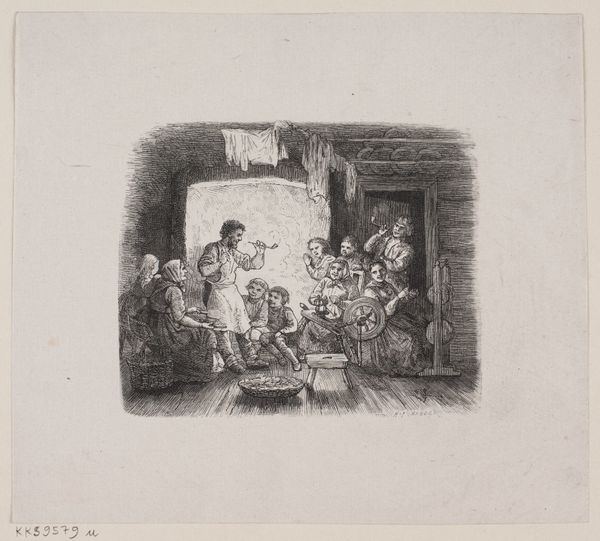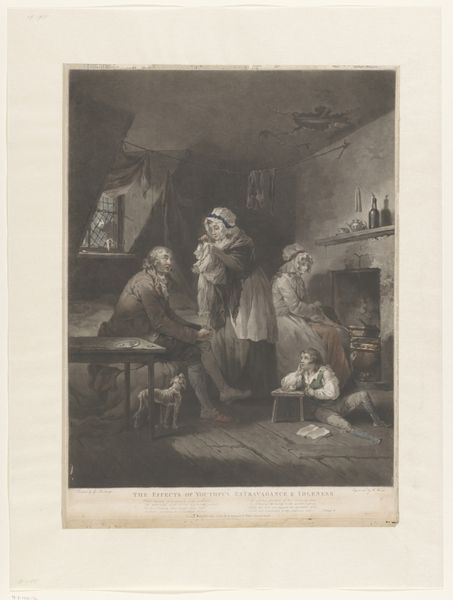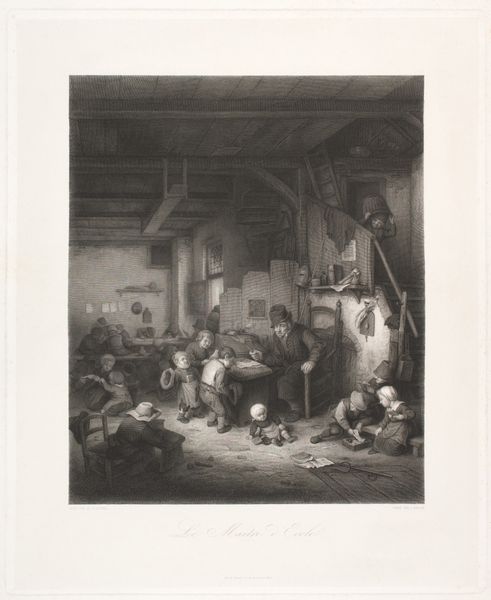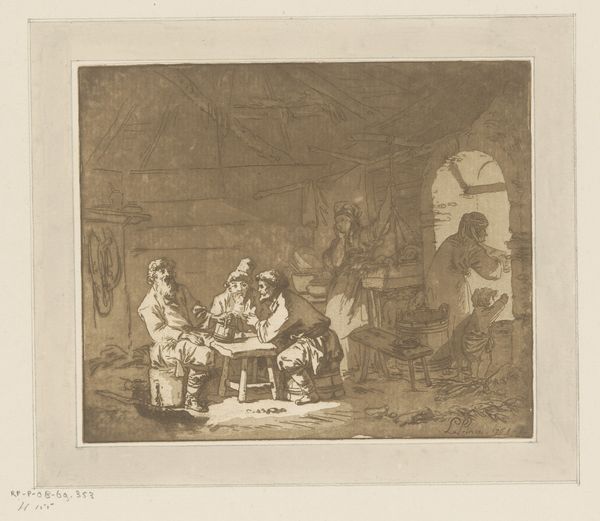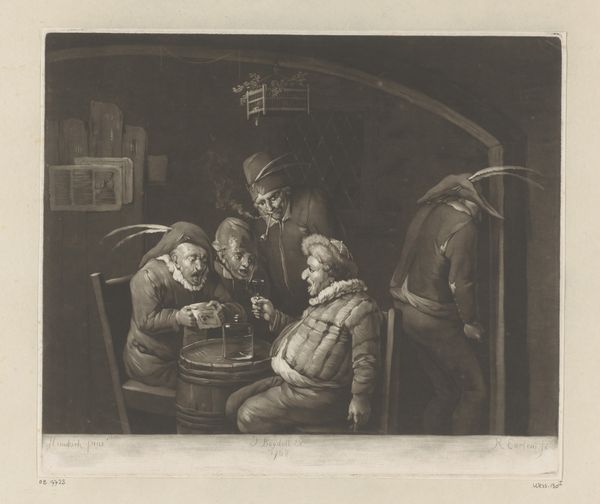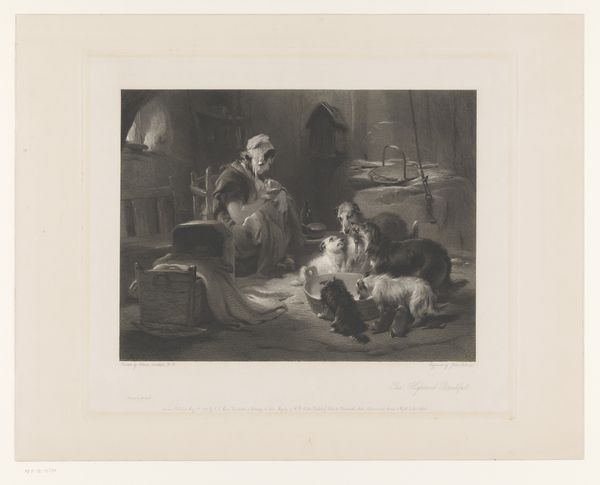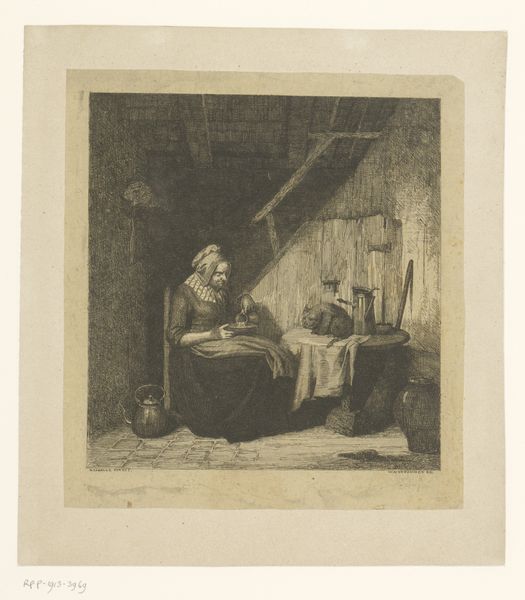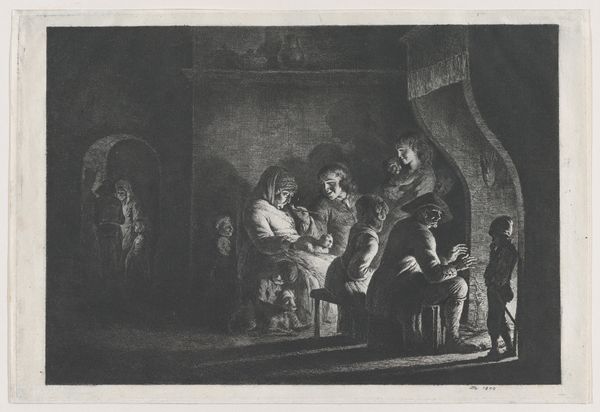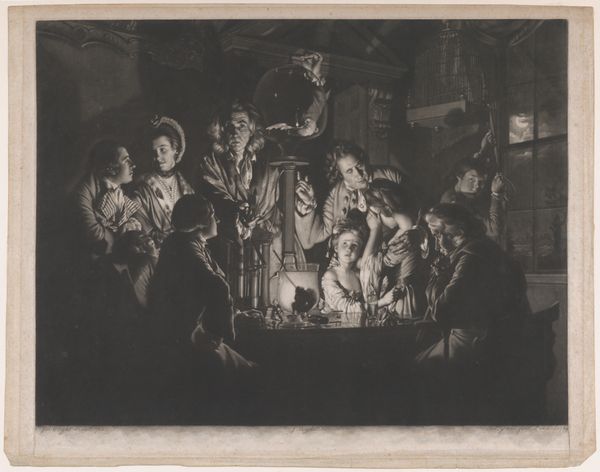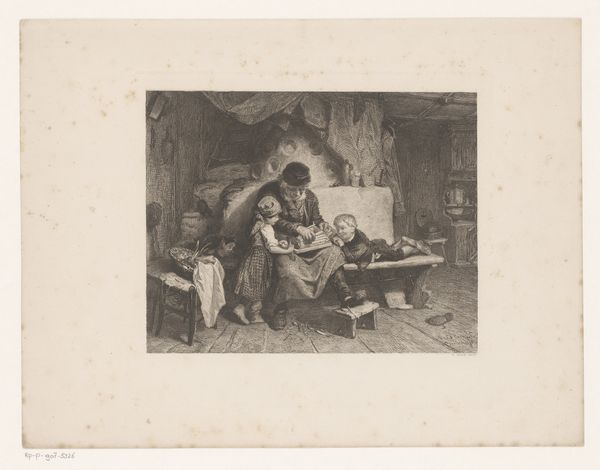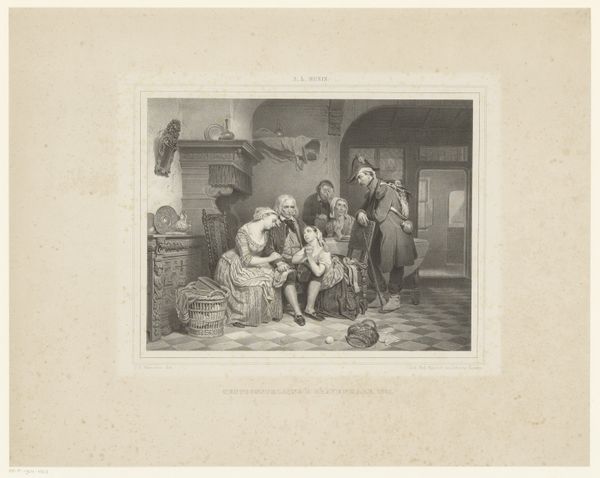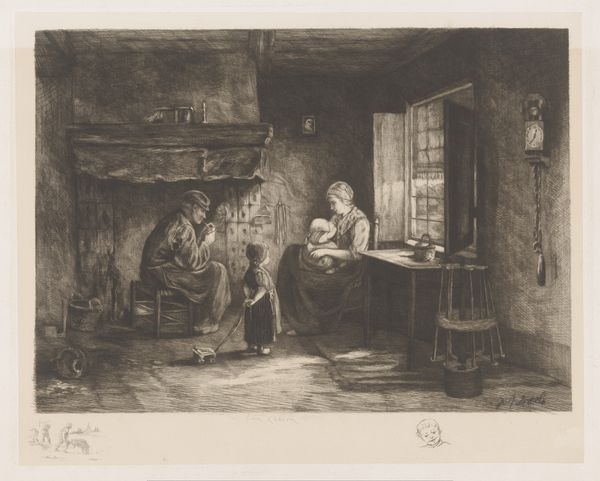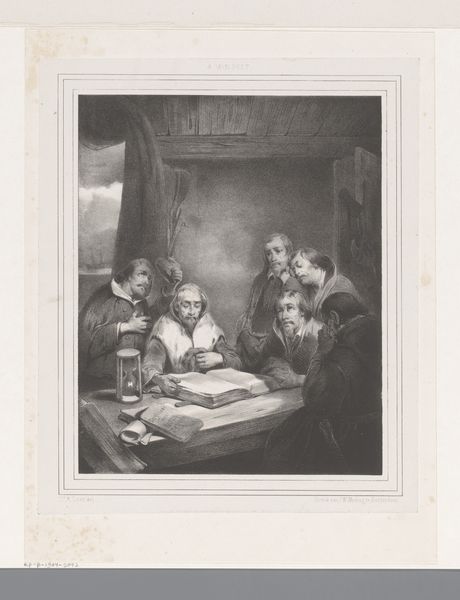
Dimensions: height 452 mm, width 525 mm
Copyright: Rijks Museum: Open Domain
Editor: Here we have Thomas Watson’s engraving, "Jupiter en Mercurius in het huis van Philemon en Baucis," from around 1772 or 1773, housed here at the Rijksmuseum. I’m struck by how the darkness and light are balanced— it feels very staged. How do you interpret the composition of this piece? Curator: Observe how Watson meticulously constructs the scene. The figures are arranged within a tight, pyramidal structure, drawing the eye towards the divine visitors, Jupiter and Mercury, but carefully counter-balanced by Philemon and Baucis. Do you see how the artist used line weight to emphasize certain figures and objects, creating a dynamic contrast between light and shadow? It’s not just about illuminating the scene; it defines the form. Editor: Yes, it almost feels theatrical. So, beyond the light play, is there more to read into the poses themselves? Curator: Absolutely. Note the postures and gestures. Jupiter, the central figure, has an immediate impact: he seems to embody composure. And then, observe Mercury, his hand gestures convey humility. Now consider how they engage in the same act of dining as the elder couple, therefore underlining humanity. Consider the use of the architectural framework. How does it structure our gaze? Editor: The way you break it down reveals an intent I didn't initially perceive. It's more than just light; it's about creating an internal language between the subjects through these visual cues. Curator: Precisely. Through close observation and a formalist lens, we reveal layers of intention that structure and inform our understanding of the piece. Editor: I see the power in focusing on the form itself. It really clarifies the narrative. Curator: Indeed. The piece highlights the potency that visual analysis holds within the artwork.
Comments
No comments
Be the first to comment and join the conversation on the ultimate creative platform.
